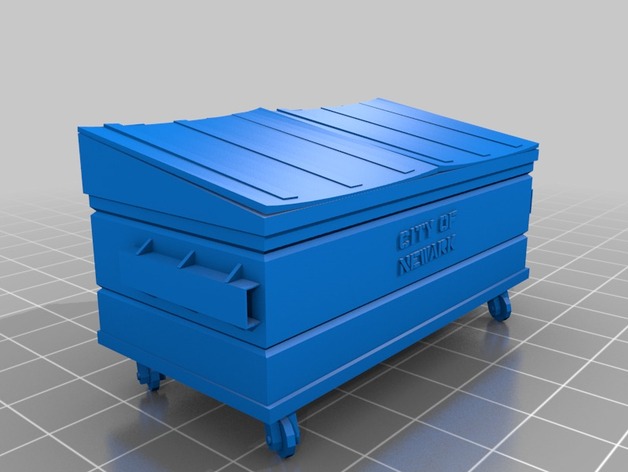
Dumpster
thingiverse
Creating a simple tabletop RPG system starts with designing a suitable setting. In this case, we'll aim for an effective size that's roughly equivalent to a coffee mug in height – around 30mm. To begin, let's utilize Tinkercad or take our first steps in mastering SketchUp. While the two tools differ in their core capabilities, they both provide versatile platforms to explore three-dimensional modeling. Following are step-by-step instructions for setting up a tabletop RPG: **Step 1: Define Setting Requirements** - Height: Ensure your setup matches your desired height (approximately 30mm). You may want to start with basic elements or adjust existing models to suit this specification. - **Tools and Equipment** - A design platform such as Tinkercad (easy and free) for learning the basics, or an advanced tool like SketchUp for creating more complex designs. **Step 2: Develop RPG Components** - Consider designing key components necessary for your tabletop experience: • Dungeons or locations • Items (characters, quests, etc.) - Miniature characters (dwarves, humans, creatures) with a variety of skins • Optional extras like furniture or details for creating a vivid setting. - Utilize shapes in Tinkercad that mirror your tabletop game settings and make any necessary changes. In SketchUp, work on building more complex models. **Step 3: Implement Interactive Elements** * Work on implementing mechanisms into your tabletop to allow users to physically move around: - Incorporate elements like movable bridges or collapsing sections for creating dynamic scenes. - Add interactive miniatures by attaching movement systems, sensors, and small servos. With Tinkercad or SketchUp as our creative tools, crafting an immersive tabletop RPG experience is entirely achievable. Whether beginners using simple tools to develop foundational skills or veterans experimenting with the possibilities in a 3D environment – each platform presents an accessible pathway for enhancing interactive games. **Tips** • **Community Sharing:** Once your tabletop setup becomes functional, consider sharing tutorials and blueprints on forums and gaming communities, especially on Reddit's r/sketchup and r/Tinkercad, or any platforms focused on gaming experiences. • Utilize online resources to guide your work. Look for in-depth instructions in making models in 3D for TinkerCAD, then adapt those ideas to fit your SketchUp needs when appropriate.
With this file you will be able to print Dumpster with your 3D printer. Click on the button and save the file on your computer to work, edit or customize your design. You can also find more 3D designs for printers on Dumpster.
